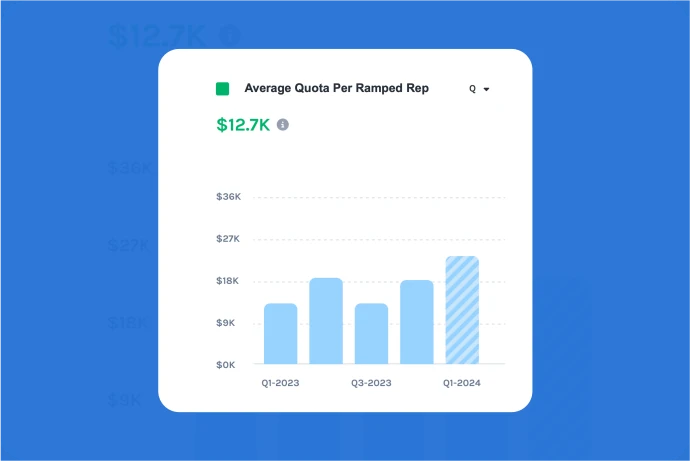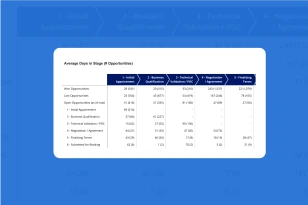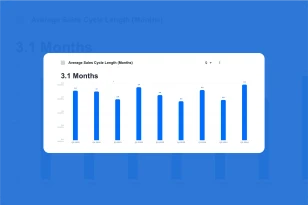What is Average Quota Per Rep?
Average Quota per Rep refers to the average sales target or quota assigned to each sales representative within a specified time period. It provides an indication of the typical workload or revenue expectation for individual members of the sales team.
Why is Average Quota Per Rep important?
Average Quota per Rep is crucial for several reasons:
- Resource Allocation: The metric aids in resource allocation by providing insights into the distribution of sales targets across the sales team. It ensures that quotas are distributed fairly and that each representative has a manageable workload.
- Performance Benchmarking: It serves as a benchmark for evaluating the reasonableness of individual quotas. Monitoring the average quota helps identify outliers—sales representatives with significantly higher or lower quotas—and ensures alignment with overall business objectives.
- Motivation and Fairness: By maintaining a reasonable average quota, the company promotes a fair and motivating environment for the sales team. Unrealistic quotas can demotivate representatives, while achievable targets contribute to a positive and motivated sales culture.
- Goal Setting and Strategy: Understanding the average quota per rep guides the goal-setting process. It influences the development of sales strategies and helps sales managers set realistic expectations for the team based on historical performance and market conditions.
How do you calculate Average Quota Per Rep?
Average Quota Per Rep Formula
Sum of Individual Quotas / Number of Sales Reps
How do you improve Quota Per Rep?
Improving Average Quota per Rep involves strategies to optimize the distribution of quotas and enhance overall team performance. Here are some approaches to improve this metric:
- Individualized Quota Assignments: Tailor quota assignments to the strengths, experience, and historical performance of each sales representative. Consider factors such as territory size, industry complexity, and market conditions when determining individual quotas.
- Data-Driven Quota Setting: Use data analytics to inform quota-setting decisions. Analyze historical performance data, market trends, and individual sales representative capabilities to set quotas that are both challenging and achievable.
- Regular Quota Reviews: Conduct regular reviews of individual quotas to ensure they remain aligned with business objectives and market dynamics. Adjust quotas as needed based on changes in product offerings, market conditions, or organizational goals.
- Collaborative Goal-Setting: Involve sales representatives in the goal-setting process. Solicit their input on the achievability of quotas and consider their insights when determining individual targets. Collaboration fosters a sense of ownership and commitment.
- Training and Skill Development: Invest in training programs to enhance the skills of the sales team. Improved skills can lead to higher efficiency, allowing sales representatives to meet or exceed quotas more effectively.
- Sales Team Collaboration: Encourage collaboration and knowledge-sharing among team members. A collaborative environment allows sales representatives to leverage each other’s strengths and insights, contributing to overall team success.
- Incentive Alignment: Ensure that incentive structures align with quota assignments. Incentives should motivate sales representatives to strive for success without compromising fairness or creating undue pressure.
- Performance Analytics: Leverage performance analytics to identify trends and patterns related to quota attainment. Use insights from top performers to guide coaching and development efforts for other team members.




